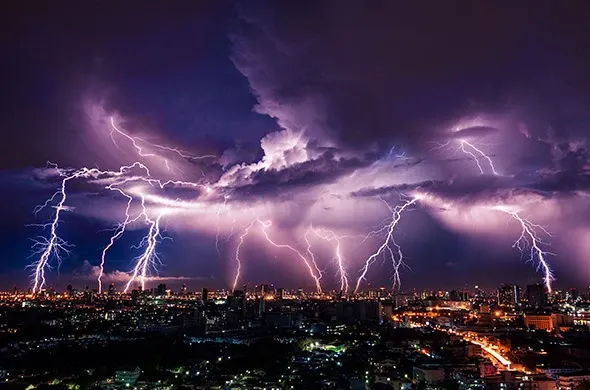AML Adoption to Hit 3.8 Million Businesses by 2030
A new study from Juniper Research found that the number of businesses deploying Anti-money Laundering (AML) systems will surge to more than 3.8 million worldwide by 2030.

Nearly three out of four Americans surveyed think the weather is growing increasingly severe, according to a study fielded by The Weather Company in partnership with Morning Consult. Yet only two in five are ill prepared for a severe storm.
The Weather Company, an IBM business, released its 2019 hurricane forecast for the Atlantic and Tropics, in addition to data on preparedness and the correlation between severe weather and emotions. The company predicts 14 named storms, with the potential for seven hurricanes and three major hurricanes in 2019,- a slight decrease in activity when compared to the previous season. The Atlantic hurricane season starts June 1 and runs through November 30.
"El Niño conditions are expected to continue throughout the North Atlantic hurricane season, which will enable an atmospheric pattern that is not conducive for increased tropical development," said Todd Crawford, chief meteorologist for The Weather Company. "Alternatively, the North Atlantic Ocean temperatures are warmer-than-normal, which tends to produce above normal activity levels. The combination of El Niño conditions and warm Atlantic waters suggest a near-normal season that is similar to last year.
Nearly 40 percent of Americans have experienced severe weather that damaged their homes or made them evacuate, with one in five happening in the last five years. While weather is universal, how people react to it can be very personal. According to the study 42% don't have an evacuation plan in the event of severe weather. 19% have a family meet-up plan. Americans are most likely to heed local government's warning if told to evacuate (50% very likely), more so than family (44%) or close friends (34%).
When Americans choose not to evacuate, 23% say the main reason they would stay is because they don't believe evacuation would be necessary and that they could ride out the storm. Others would stay home to care for family members (19%) or pets (20%). 31% of respondents say they would always evacuate. About 15% of respondents have a preparedness kit packed. About half of respondents do not have a preparedness kit, but say they have essential items in mind if an emergency arises.
62% Americans watch TV or streaming services during a storm, with Gen X at 67%, and Boomers at 59%. About half of Americans spend their time browsing the Internet during a storm. Local broadcast TV is still a go-to source among older viewers: 61% of Boomers rely on traditional TV for updates, outpacing 39% of Millennials and 31% of Gen Z respondents who turn to local broadcast for their weather news.
60% of Millennials and 61% of Gen X use smartphone apps for weather information, along with 57% of Boomers and 50% of Gen Z. More than half of respondents check their phones three or more times per day for timely updates during severe weather events.
IBM and The Weather Company provide data and insights to help people and businesses prepare for the impact of weather. By leveraging billions of data sources, AI, and open source technology, the company is providing new possibilities of decision making, preparedness and response.
For example, through IBM's Code and Response deployment initiative, self-taught Brooklyn developer Bryan Knouse and his Project Owl team recently piloted new technology built on the IBM Cloud and leveraging IoT, AI, and data from The Weather Company. It aims at providing always-on communication networks in the path of severe storms. The technology was created during the Call for Code 2018 Global Challenge in response to Hurricane Maria, which devastated the island and knocked out communication services, leaving people with no way to contact family members or call for help.
Over 6,000 data points were successfully plotted on Project Owl's open source IBM Cloud-based incident management system, showing the potential of this technology to operate at scales large enough to help make a difference in disaster response. Along with the Project Owl team, IBM developers, Corporate Service Corps, and partners like the Information Technology Disaster Resource Center and the Engine-4 IoT Lab, are working to fully implement the OWL network in Puerto Rico later this year. Project Owl will conduct its next pilot in Houston at the end of May.
In 2018, over 100,000 developers from 156 nations participated in the inaugural Call for Code Global Challenge, a multi-year global campaign that rallies developers to use the latest technologies to drive long-lasting change across the world. Developers built more than 2,500 applications to address the impact of natural disasters through technology. To support the initiative, IBM engaged developers to work with weather data by offering tools like APIs and code patterns along with Watson AI, IoT and IBM Blockchain to help create solutions to mitigate the effects of natural disasters.